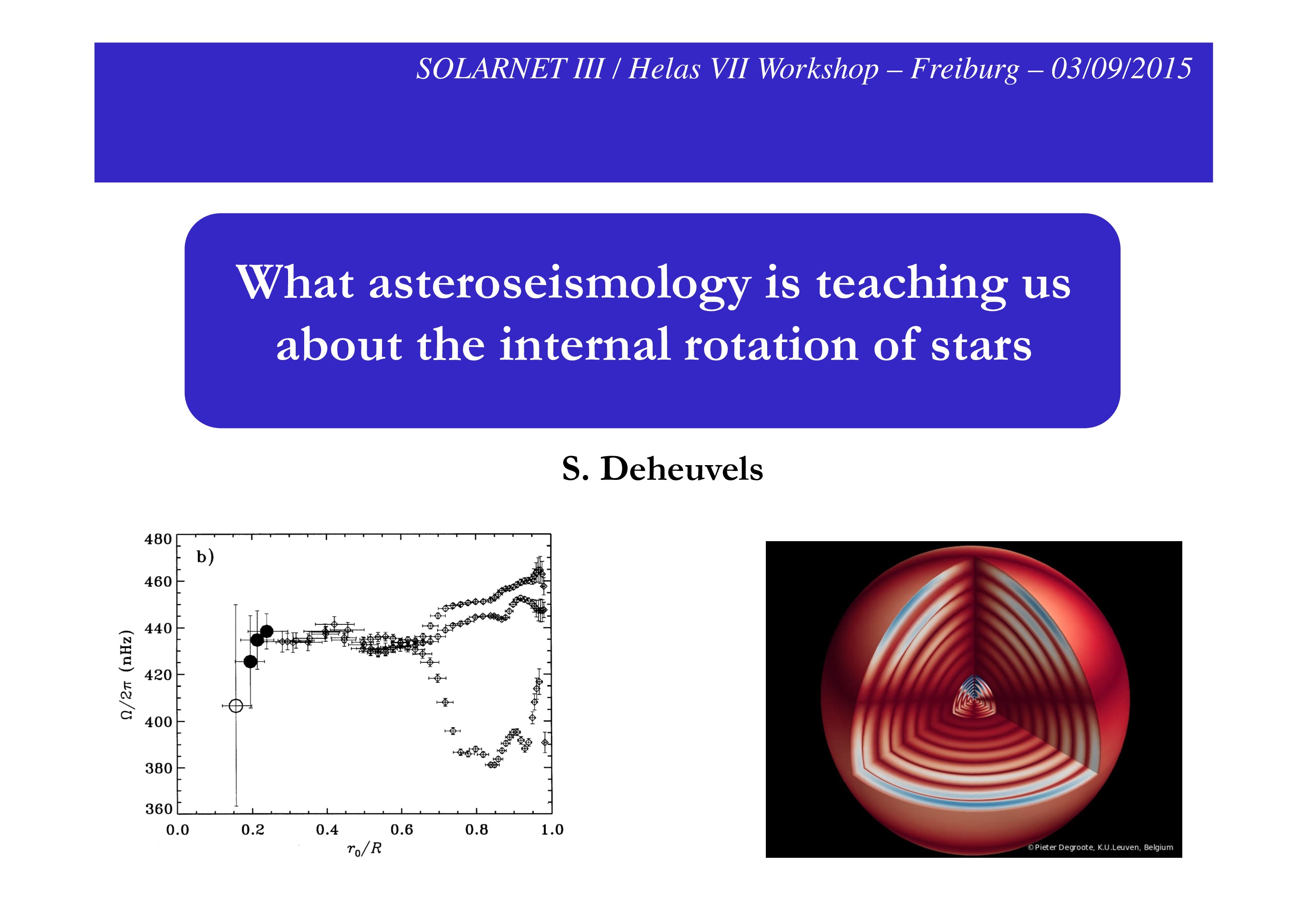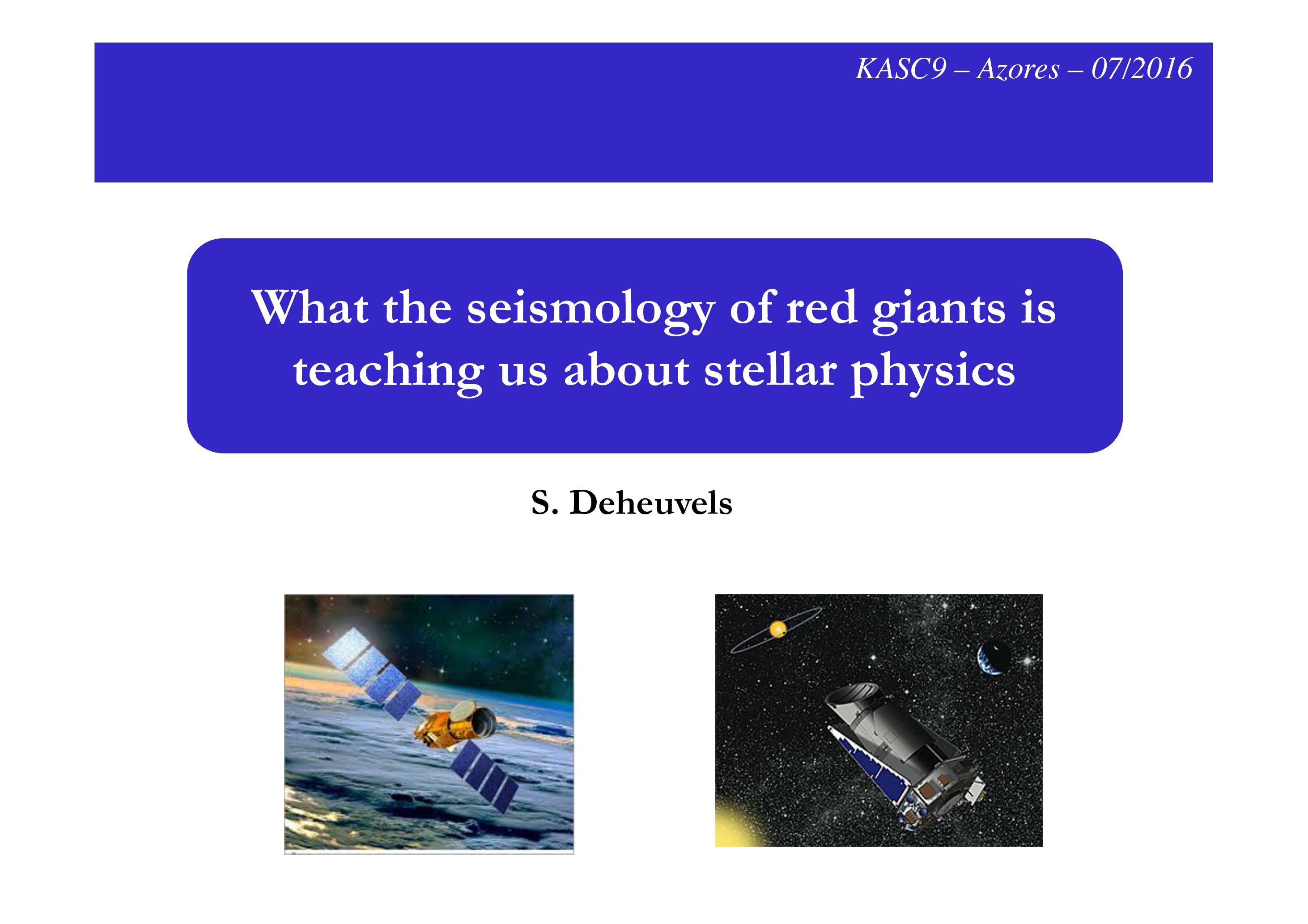Date of upload:
20.10.2015
Abstract:
It is notoriously difficult to measure how the interior of stars rotate. So far, this has hindered our progress in stellar modeling because rotation is expected to play a central role in the evolution of stars. The inversion of the internal rotation profile of the Sun obtained from helioseismology in the 90's has revolutionized the field and shown that an efficient and yet unknown mechanism that transports angular momentum operates in the Sun. The space missions CoRoT and Kepler, launched in 2006 and 2009 respectively, have finally made it possible to probe the internal rotation of stars other than the Sun using seismology. In this review talk, we give an overview of the results that were obtained so far, which cover an ever growing part of the HR diagram, from the main sequence (inversions of the rotation profile are starting to be obtained for A, F, and B-type hybrid pulsators) to subdwarf B stars and white dwarfs. A special attention will be given to red giants, in which the detection of so-called mixed modes has made it possible to measure the core rotation rate in several hundreds of targets and to quantify radial differential rotation from the subgiant phase to the core-helium burning phase. These exciting results are giving new momentum to theoretical works tackling the question of angular momentum transport in stars by providing unprecedented observational constraints. We briefly discuss the results of some of the latest studies.

